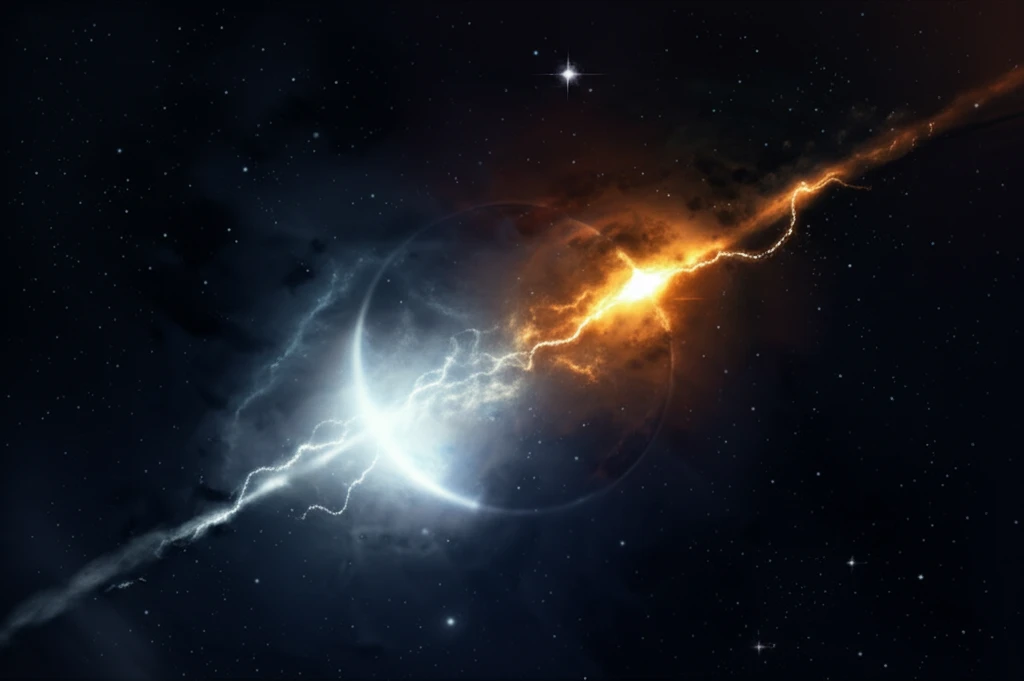
Unveiling the Secrets of Pulsar Wind Nebulae: What X-ray Analysis Reveals About G0.9+0.1
"Explore how spatially resolved X-ray spectroscopy and modeling are transforming our understanding of nonthermal emissions in the pulsar wind nebula G0.9+0.1."
The cosmos is a vast and dynamic arena, filled with celestial objects that continue to challenge and inspire scientific inquiry. Among these fascinating entities are supernova remnants (SNRs), the expansive structures that remain after a star has exploded. Within certain SNRs, a special phenomenon occurs: the formation of pulsar wind nebulae (PWNe). These nebulae are created by the energetic wind of particles emitted by a pulsar, a rapidly rotating neutron star.
One such composite SNR, known as G0.9+0.1, has garnered significant attention due to its unique characteristics and proximity to the Galactic center. Discovered in the late 1960s, G0.9+0.1 exhibits a luminous core surrounded by a fainter shell, making it a prime target for astronomers seeking to understand the interplay between SNRs and PWNe. The core's identification as a PWN has spurred numerous investigations into its X-ray and gamma-ray emissions, offering clues about the energetic processes at play.
Recent research employing spatially resolved X-ray spectroscopy and advanced modeling techniques has shed new light on the nonthermal emissions emanating from the PWN in G0.9+0.1. By dissecting the X-ray spectrum at different locations within the nebula, scientists are uncovering variations in its properties that hint at the underlying dynamics and particle acceleration mechanisms. This article explores these cutting-edge findings, revealing how they contribute to our broader understanding of PWNe and their role in the cosmic ecosystem.
How X-Ray Analysis Reveals the Secrets of G0.9+0.1's Pulsar Wind Nebula

A detailed study of G0.9+0.1 involved analyzing data from the Chandra X-ray Observatory and the XMM-Newton telescope. These instruments allowed scientists to examine the X-ray emissions from different regions of the PWN. The process began with calculating hardness ratios, which help to quantify the spectral properties of the X-ray emissions across the nebula. By comparing the ratios in different areas, researchers could identify variations in the energy distribution.
- Chandra Data: Used for high-resolution imaging and hardness ratio calculations.
- XMM-Newton Data: Provided detailed spectral information from different regions.
- Spectral Analysis: Employed absorbed power-law models to characterize X-ray emissions.
- Spatially Resolved Spectroscopy: Enabled the study of spectral variations within the PWN.
Why These Findings Matter for Understanding Pulsar Wind Nebulae
This detailed X-ray study of G0.9+0.1 has significant implications for our understanding of PWNe and the energetic processes that occur within them. The observed softening of the X-ray spectrum with distance from the pulsar provides valuable insights into how particles are accelerated and lose energy in these environments. Moreover, the spatially resolved analysis allows for a more nuanced understanding of the nebula's dynamics compared to previous studies.
